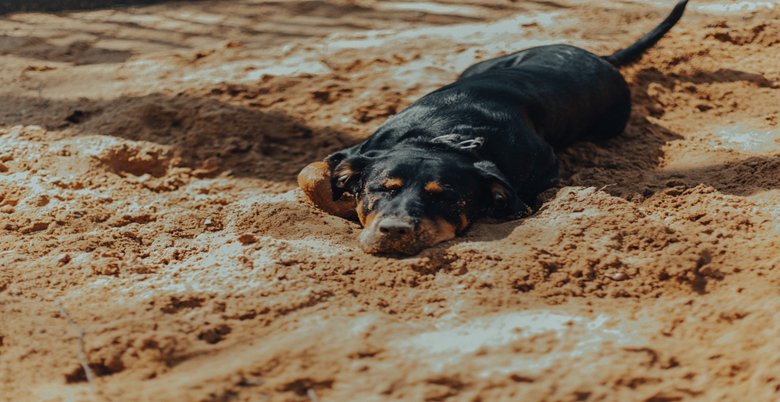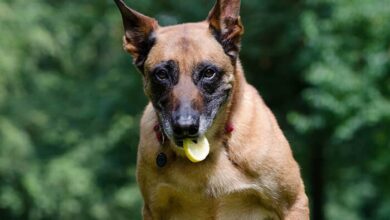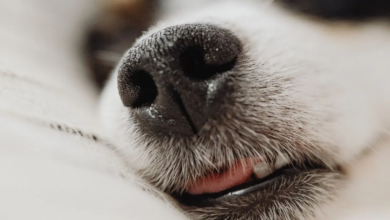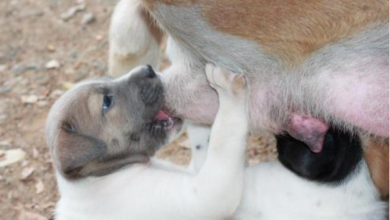Why Dogs Like Laying In The Sun

Dog owners are used to their pets’ bizarre behavior, such as frantic digging in inappropriate places, barking and howling for no apparent (at least to humans) reason, spinning or circling in place, or even eating their own waste. Many canine behaviors make no sense to their owners, whereas the same activities may make perfect sense to dogs. Fortunately, one such behavior is laying in the sun, which is less energetic and exciting. We’ve all seen our dogs pant in hot weather or drink water after a summer walk. So, what’s the deal with dogs lying in the sun? If they overheat easily, as it appears they do, why would they lay in the sun?
The Root of the Behavior
Dogs, like humans, can and do sustain heat and sun-related injuries. Exposed skin areas, such as the mouth, ears, and foot pads, can burn if exposed to sunlight for an extended period of time. And because dogs lack sweat glands, they can easily overheat if not given a shady or cool place to rest. It should go without saying that you should never leave your dog in a car on a sunny day, even if the weather is mild. But what attracts dogs to the sun? What appeal does a dog have to a sunny spot on the living room carpet or in a grassy backyard?
The solution is both complex and surprisingly simple. Dogs, like humans, require sunlight exposure to convert certain fats and oils into Vitamin D. That substance is essential for bone formation and maintenance, as well as for the body’s mineral utilization; this is true for all mammals, human or canine. The only difference is that, unlike humans, canines’ Vitamin D is formed on their fur, where those fats and oils are deposited. As a result, after a sunbath, you may notice your dog licking its fur. The dog ingests the Vitamin D in the same way that a human might take a supplement pill.
When it comes to vitamin supplements, it is possible that a dog produces less Vitamin D than they require, but commercial supplements are available. Dog owners should be aware, however, that vitamin D is oil-soluble, which means that excess D accumulates in the body. You can ask your vet to include a Vitamin D level test in your dog’s routine blood panel testing, and the vet can tell you whether Vitamin D supplementation is necessary or even advisable. In most cases, as long as your dog gets enough sunlight, he won’t need any supplements. Keep in mind that exposure to the ultraviolet B ranges of the sun is required for proper Vitamin D formation in both you and your dog.
Promoting the Behavior
Left to his own devices, your dog will most likely get all of the sunlight exposure he requires. Make sure your dog has access to a cooled and/or shady refuge if he becomes overheated, as well as plenty of fresh, clean water. Because dogs can overheat and even get sunburns, it is critical that you provide your dog with a place to escape the heat and sunlight, as well as an opportunity for leisurely sunbathing.
In general, dogs require significantly less vitamin D than humans and usually get all they need from a high quality commercial dog food. However, if you want your dog to get enough vitamin D from nature, feed them naturally fatty fish such as salmon, eggs and offal such as liver. Dairy products also provide vitamin D, but not all dairy products are rich in vitamin D. Or, even better, find a quality pet food that contains these ingredients. You can also check the ingredient list to make sure cholecalciferol is listed. This is the specific type of vitamin D that dogs can most easily and efficiently utilize.
Even if your dog is found to be vitamin D deficient, do not give your dog an over-the-counter human vitamin supplement without the advice of a veterinarian. is much higher and vitamin D is not used up quickly, so an overdose can make a dog sick. Always consult your veterinarian to ensure safety before giving your dog any medications or supplements.
Other Solutions and Considerations
If supplements aren’t for you, and for some reason (climate, disability, etc.) you can’t get your dog to get enough walks in the sun, there are other solutions you can consider regarding vitamin D and help your dog stay healthy. You can explore it. The solution is something people in the far north latitudes of Alaska, Canada, Scandinavia, and Russia have known for years: UV or full-spectrum lighting. Remember that humans also need UVB light to make vitamin D. So if you can’t walk your dog in the middle of Alaska’s winter, you’re obviously not getting enough sunlight. UVB and full spectrum bulbs, fluorescent tubes, and even lamps or “light boxes” are available from many manufacturers and retailers, but always check with your veterinarian or doctor before attempting this. Excessive exposure to UVB light can cause burns, skin irritation, and even eye damage, and these problems can affect both your dog and you. Read the instructions and get permission from your doctor and veterinarian beforehand.
Conclusion
Lying in the sun for a fun afternoon sounds like a good way to spend a fun afternoon for you and your dog, but that’s not all. Exposure to the UVB wavelengths found in sunlight can actually, has certain positive health benefits for you and your dog. And even if sunbathing your dog is difficult or impractical, there are some ways to get around that restriction. Please consider











